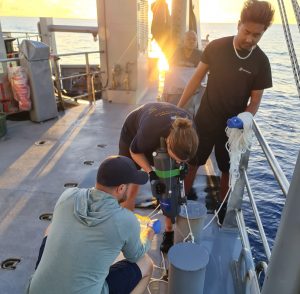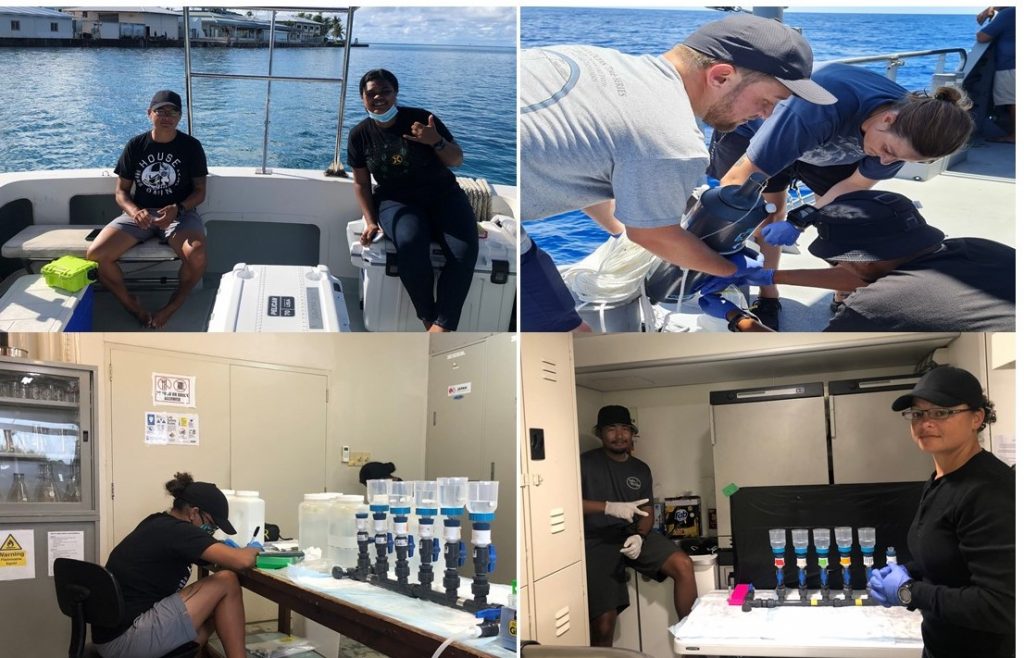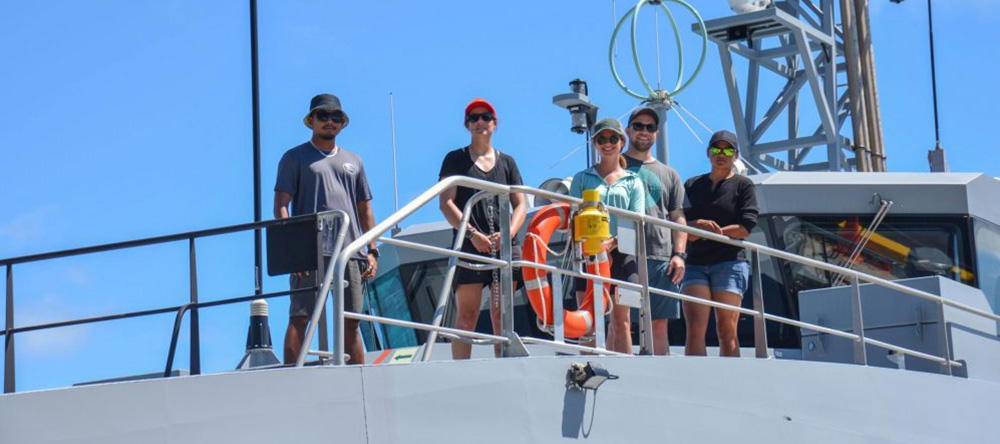- Research
PICRC Researchers Set Sail into the PNMS for a New eDNA Monitoring Project
Last month, PICRC researchers Dr. Louw Claassens, Ikelau Otto and McQuinnley Mesengei joined Captain Allison Baiei and the crew of PSS Remeliik, Palau’s offshore patrol vessel, on a five-day expedition to survey the diversity of fish species in the Palau National Marine Sanctuary (PNMS). Using a relatively new technology called Environmental DNA (eDNA), researchers collected water samples which will be used to determine the biodiversity of fish living throughout the PNMS, as well as within Palau’s nearshore environments.

To measure the diversity of marine organisms in the PNMS, the crew utilized eDNA monitoring, a method which records the number of species in a large area by analyzing the tiny traces of DNA that they leave behind. Marine animals shed their DNA into the water through mucus, feces, and scraps of tissue. By collecting this trace DNA in water samples, researchers can reveal the different species in an area without ever seeing the organisms themselves. This method is especially powerful in large scale Marine Protected Areas like the PNMS, which are so vast that traditional biodiversity surveys are not always feasible.
Over the course of the expedition, the crew surveyed 20 offshore sites throughout the PNMS, the Commercial Fishing Zone and the Artisanal Fishing Zone, collecting 100 water samples. After returning to shore, PICRC researchers Victor Nestor, Dawnette Olsudong, Elsei Tellei, Geory Mereb and LeahMarie Bukurou collected and analyzed an additional 60 samples from 12 seagrass, lagoon and fore reef habitats. The water samples will be brought to California, where PICRC collaborators at Stanford University Center for Ocean Solutions will analyze the traces of DNA and identify the species at each site.
The data collected in this expedition will, for the first time, set a baseline understanding of fish diversity in the PNMS. PICRC will continue to build on this data through a long term eDNA monitoring program with seasonal surveys, the next of which is scheduled for November 2021. By comparing these eDNA samples over time, researchers can determine how Palau’s ocean diversity is changing, and measure the success of conservation efforts. Ultimately, this will help to guide the PNMS’ management, and sustain Palau’s rich oceans into the future.



